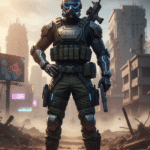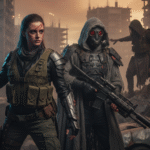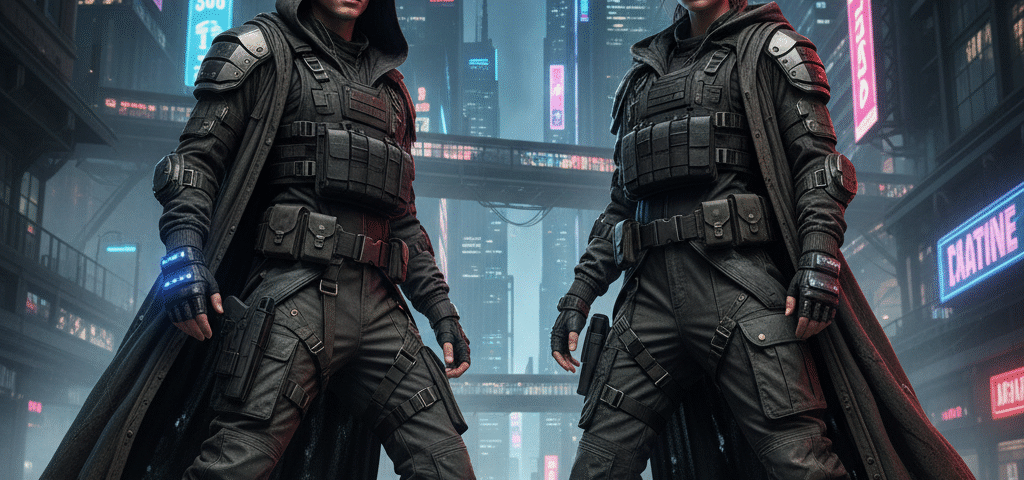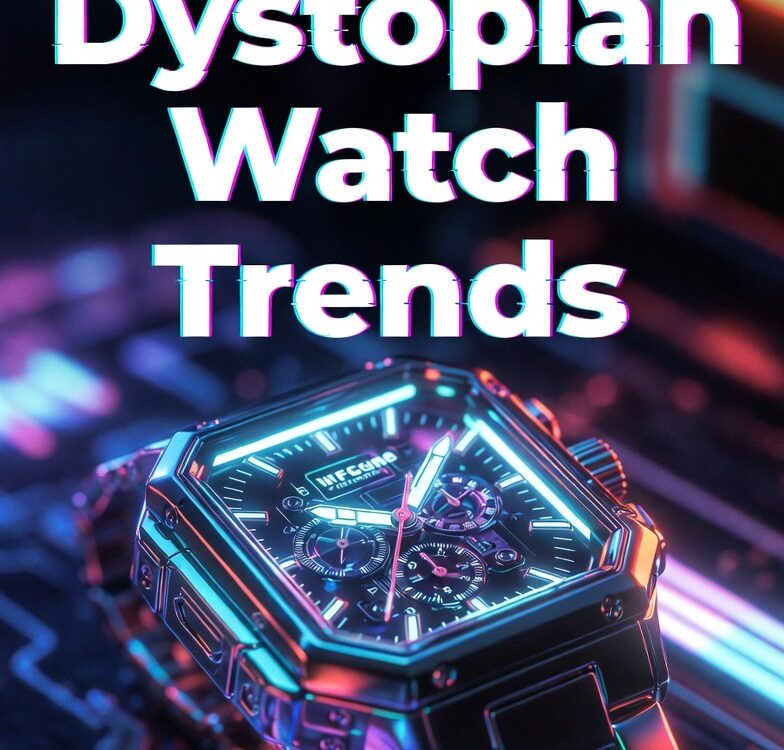
Military Dystopian Outfits: Blending Survival Gear with Futuristic Edge
October 14, 2025
Dystopian Cosplay Ideas to Rule the Wasteland
October 15, 2025The worlds of science fiction often present us with futures marked by social upheaval, technological overreach, and environmental collapse. Within these imagined realities, clothing is rarely just about aesthetics. It is about survival, utility, and identity. This is the core of tactical dystopian fashion, a style that blends rugged functionality with a dark, futuristic edge. It’s a look that feels pulled directly from the pages of a Philip K. Dick novel or the scenes of a film like Blade Runner, yet it is increasingly visible on city streets today.
This style is more than just wearing black or collecting military surplus gear. It represents a a fusion of practicality and a specific worldview, reflecting anxieties and fascinations of our current era. It asks: if the world became a more challenging place, what would you wear? The answer lies in clothing that is modular, durable, and designed to perform.
This article will explore the growing movement of tactical dystopian fashion. We will look at its origins in cyberpunk and military gear, break down its key elements, and examine its cultural significance. We’ll also see how this niche style is influencing mainstream fashion and what its continued popularity says about our society.
The Origins of Tactical Dystopian Fashion
The roots of this aesthetic are deeply embedded in two distinct, yet overlapping, worlds: speculative fiction and real-world utilitarian apparel.
From Science Fiction to Streetwear
The “dystopian” part of the name owes everything to the science fiction of the 1980s and 90s. The cyberpunk genre, with its “high tech, low life” motto, provided the foundational visual language. Films like Blade Runner and Akira, and novels like Neuromancer, depicted characters navigating gritty, rain-slicked megacities. Their clothing was a hybrid of salvaged tech, worn-out street clothes, and functional gear needed to survive in a hostile environment. This created a visual identity that was resourceful, rebellious, and inherently cool.
These fictional worlds established the color palette—predominantly black, gray, and olive drab—and the silhouette, which often involved layering, asymmetrical cuts, and integrated technology. The characters weren’t wearing costumes; they were wearing survival tools.
The Influence of Military and Outdoor Gear
The “tactical” element comes from military and outdoor apparel. The rise of brands specializing in high-performance gear for soldiers, law enforcement, and outdoor adventurers introduced a new level of functionality to clothing. Materials like Gore-Tex, Cordura, and Ripstop nylon, originally developed for extreme conditions, became key components.
Features like MOLLE (Modular Lightweight Load-carrying Equipment) webbing, an abundance of pockets, and adjustable straps moved from battlefields to fashion. This focus on utility, durability, and modularity is a central pillar of tactical dystopian fashion. It’s about clothing that can be adapted to any situation, carrying essential items and protecting the wearer from the elements.
Key Elements of the Tactical Dystopian Look
Building a wardrobe around this aesthetic involves focusing on specific garments, materials, and accessories that prioritize function without sacrificing form.
The Layering System
Layering is fundamental. A typical outfit is built from the inside out, much like a soldier’s or hiker’s apparel system.
- Base Layer: This is usually a moisture-wicking shirt or long-sleeve top, often in black or gray.
- Mid-Layer: A fleece, hoodie, or technical flannel provides insulation.
- Outer Shell: The most iconic piece is the shell jacket. This is often a waterproof, windproof jacket made from technical fabrics, featuring multiple pockets, sealed seams, and an adjustable hood. Brands like Acronym, Arc’teryx, and Stone Island Shadow Project are masters of this garment.
Cargo Pants and Functional Trousers
Forget standard jeans. The lower half of a tactical dystopian fashion outfit is defined by cargo pants. But these aren’t the baggy, shapeless cargos of the 90s. Modern interpretations are tapered, articulated at the knees for better movement, and made from durable, stretchable fabrics. They feature intelligently placed pockets designed to hold everything from a phone to a multi-tool.
Footwear: Built for the Urban Jungle
Footwear needs to be durable, comfortable, and ready for any terrain, urban or otherwise. Combat boots, rugged hiking boots, and technically advanced sneakers are the go-to choices. Brands like Salomon, Nike ACG (All Conditions Gear), and Dr. Martens are popular. The ideal shoe offers ankle support, a grippy sole, and water-resistant properties.
Accessories as Tools
Accessories are not just for show; they serve a purpose.
- Bags: Messenger bags, sling packs, and backpacks made from materials like X-Pac or Cordura are essential. Many feature the MOLLE webbing system, allowing for modular attachments.
- Belts: Cobra buckle belts are a staple, known for their quick-release mechanism and extreme durability.
- Face Coverings: Masks, gaiters, and scarves add to the anonymous, futuristic look while also offering practical protection from pollution or wind.
The Cultural Significance: Why Now?
The rise of tactical dystopian fashion is not happening in a vacuum. It reflects a broader cultural mood. In an era marked by climate change concerns, social instability, and a constant influx of information about global crises, there’s a growing desire for preparedness and self-reliance. This fashion style is an outward expression of that mindset.
Wearing clothing that feels like armor can provide a psychological sense of security and readiness. It’s a way of signaling capability and an awareness of the world’s potential challenges. The aesthetic also taps into a sense of rebellion against fast fashion and throwaway culture. By investing in durable, high-quality pieces designed to last for years, followers of this style are making a statement about sustainability and mindful consumption.
Furthermore, the style offers a form of urban camouflage. The dark, muted colors and face-obscuring accessories allow individuals to move through crowded city environments with a degree of anonymity, a prized commodity in our digitally monitored world.
The Influence on Modern Fashion
While once a niche subculture, the principles of tactical dystopian fashion have begun to permeate mainstream style. Luxury brands are incorporating technical fabrics and utilitarian details into their collections. High-street retailers are offering their own versions of shell jackets and cargo pants.
The “gorpcore” trend, which focuses on outdoor and hiking gear worn in an urban context, is a close cousin and has helped normalize the sight of technical apparel in cities. The difference is that gorpcore is often more colorful and optimistic, while tactical dystopian fashion retains its dark, edgy, and futuristic character.
This influence shows that the core ideas—functionality, durability, and a prepared mindset—have broad appeal. Consumers are increasingly looking for more from their clothes than just style; they want performance and longevity.
Frequently Asked Questions (FAQs)
Q1: What is the difference between techwear and tactical dystopian fashion?
A1: The terms are often used interchangeably, but there are subtle differences. Techwear is a broader category that encompasses any clothing made with advanced fabrics and construction techniques for enhanced performance. It can be bright and athletic. Tactical dystopian fashion is a specific sub-genre of techwear that focuses on a darker, futuristic, and often militaristic aesthetic inspired by dystopian fiction. All tactical dystopian fashion is techwear, but not all techwear is dystopian.
Q2: Is this style expensive to get into?
A2: It can be. High-end brands that pioneer this look, like Acronym, are notoriously expensive due to their innovative designs and premium materials. However, you can achieve the aesthetic on a budget. Brands like Uniqlo offer minimalist basics, while military surplus stores are great sources for affordable and authentic cargo pants, boots, and bags. The key is to focus on the principles: dark colors, layering, and functionality.
Q3: Is this fashion style only for men?
A3: Absolutely not. While often marketed towards men, tactical dystopian fashion is inherently unisex. The focus is on function, fit, and silhouette rather than traditional gender norms. Many women are prominent figures in the community, adapting the style with unique layering and proportions.
Q4: Do I need to be a “prepper” to wear this style?
A4: Not at all. While the style has roots in preparedness culture, most people embrace it for its aesthetic appeal and the practical benefits of wearing durable, comfortable clothing. You can appreciate the design and functionality of a waterproof shell jacket without expecting a societal collapse.
Final Words
Tactical dystopian fashion is a compelling reflection of our times. It captures a specific feeling—a blend of apprehension and preparedness, of cyberpunk fantasy and real-world utility. It’s a style that is both forward-looking and deeply practical, offering a uniform for navigating the complexities of modern urban life.
As technology continues to merge with our clothing and our environment presents new challenges, the principles of this aesthetic will likely become even more relevant. Whether it remains a distinct subculture or its elements become fully integrated into the mainstream, tactical dystopian fashion has already proven itself to be more than just a fleeting trend. It is a design philosophy for a world that demands more from what we wear.



